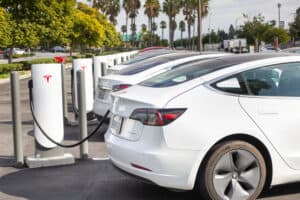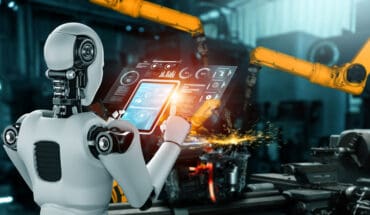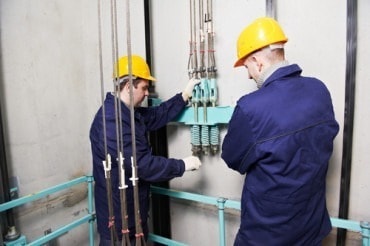
Many of the broad range of technologies (e.g., digital twins, virtualization, and more) that help auto manufacturers enable intelligent or smart manufacturing operations can play a role in the transition to EVs.
The move to electric vehicles (EVs) is underway and is poised for a rapid transition. Yet widespread adoption of EVs is hampered by challenges related to affordability, batteries, and the supply chain for electrical components. Smart manufacturing may be able to help automakers address each of these areas.
To put the time scale of the transition into perspective, consider that in the U.S., the Biden administration’s goal (backed by private and public sector investments) is to have 50% of all new vehicle sales be electric by 2030. That is an enormous jump from the current state of affairs. In 2022, only 5.6% of light vehicles registered in the U.S. were electric. And in January 2023, that jumped to 7.1%.
Areas where smart manufacturing can help
Many of the broad range of technologies (e.g., digital twins, virtualization, and more) that help auto manufacturers enable intelligent or smart manufacturing operations can play a role in the transition to EVs. Specifically, different technologies can be applied to the entire spectrum of operations.
Particularly important is virtual commissioning, which lets an auto manufacturer start with a digital model, a digital twin, of the piece of equipment, a work cell, a production line, or a plant. Using such a virtual version of new equipment and operations lets manufacturers test their systems to better understand how they would fit into an existing environment and how they would perform. In this process, all aspects of the entity, including motions, sequence of steps, software execution, and more, can be optimized before anything is installed on a new line or changed on an existing one. Examples of how these technologies can help include:
Design: Digital modeling and digital twins can be used to design new motors and power electronics. The same models and virtual representations might then be used to optimize EV auto designs for performance, efficiency, and cost.
Virtualization and modeling can also be used to develop vehicle architectures and platforms specifically designed for EVs rather than adapting existing internal combustion engine (ICE) designs.
Assembly and production lines: Virtual commissioning can be used to retrofit and update factories to accommodate EV production lines. Or the technology can be used to design and build new facilities altogether.
Train and reskill workers: Virtually commissioned facilities and digital twins of work cells, production lines, and complete plants can be used before new facilities are built or in place to train employees to transition from ICE vehicle production to EV production. Once facilities are in place, the same models and virtualizations can help ensure employee safety and optimize their work processes.
EVs bring new manufacturing challenges
In addition to revamping basic auto design and production, EVs introduce new problems that ICE auto manufacturing does not have to address. Again, the adoption of smart manufacturing practices can help.
One area of concern is supply chain management. Automakers (and really all manufacturers) have faced supply chain issues dating back to the pandemic. Other factors, like the Russian-Ukraine conflict and other geopolitical events, are compounding problems.
One example is the chip shortage auto manufacturers have faced in the last few years. As we wrote in “Riding Out Automotive Market Uncertainty with Digital Twins:”
In 2021, the automotive industry lost more than $200 billion due to chip shortages. Eleven million fewer vehicles were produced. Manufacturing plants sat idle. Ford suspended operation at some plants to focus efforts on truck assembly, where the margins are better, according to an MIT Management, Sloan School article.
In 2022, many automakers decided to ship some of their most popular models without all the chips they were designed to include. For example, Automotive News reported that “Ford told its dealers it would start building Explorers, its best-selling SUV in the U.S., without the computer chips that enable rear-seat climate control, meaning that backseat passengers won’t be able to adjust the air conditioner and heat.” The company said it would install the missing chips once they become available.
EVs, and particularly their batteries, bring new items that have not traditionally been part of the auto industry’s supply chains. Specifically, manufacturers and their battery suppliers now must address raw material sourcing, ensuring a steady supply of critical materials such as lithium, cobalt, nickel, and rare earth elements.
Smart manufacturing often goes beyond using IoT data and OT systems to improve operations. Frequently, industrial systems and data are tightly integrated with enterprise systems in a smart manufacturing plant. That can be leveraged to bring together production OT data with supplies and ordering in ERP systems to essentially extend production insights to the supply chain.
One final area that needs attention when shifting to EV manufacturing is sustainability and recycling. These two issues are prominent in manufacturing today. EVs bring a wealth of new materials and processes that must be brought into a company’s sustainability and recycling strategies and objectives.
Smart manufacturing can help in that it provides a way for a manufacturer to focus on the lifecycle analysis of everything from sourcing materials to end-of-life considerations.
A final word on smart manufacturing for EVs
The transition to EVs demands a holistic approach that considers not just the vehicles themselves but the broader ecosystem, which includes governmental policies, technological advancements, costs, and environmental impact. Proper execution in all these areas, assisted by smart manufacturing best practices, can help auto manufacturers successfully navigate the transition.








